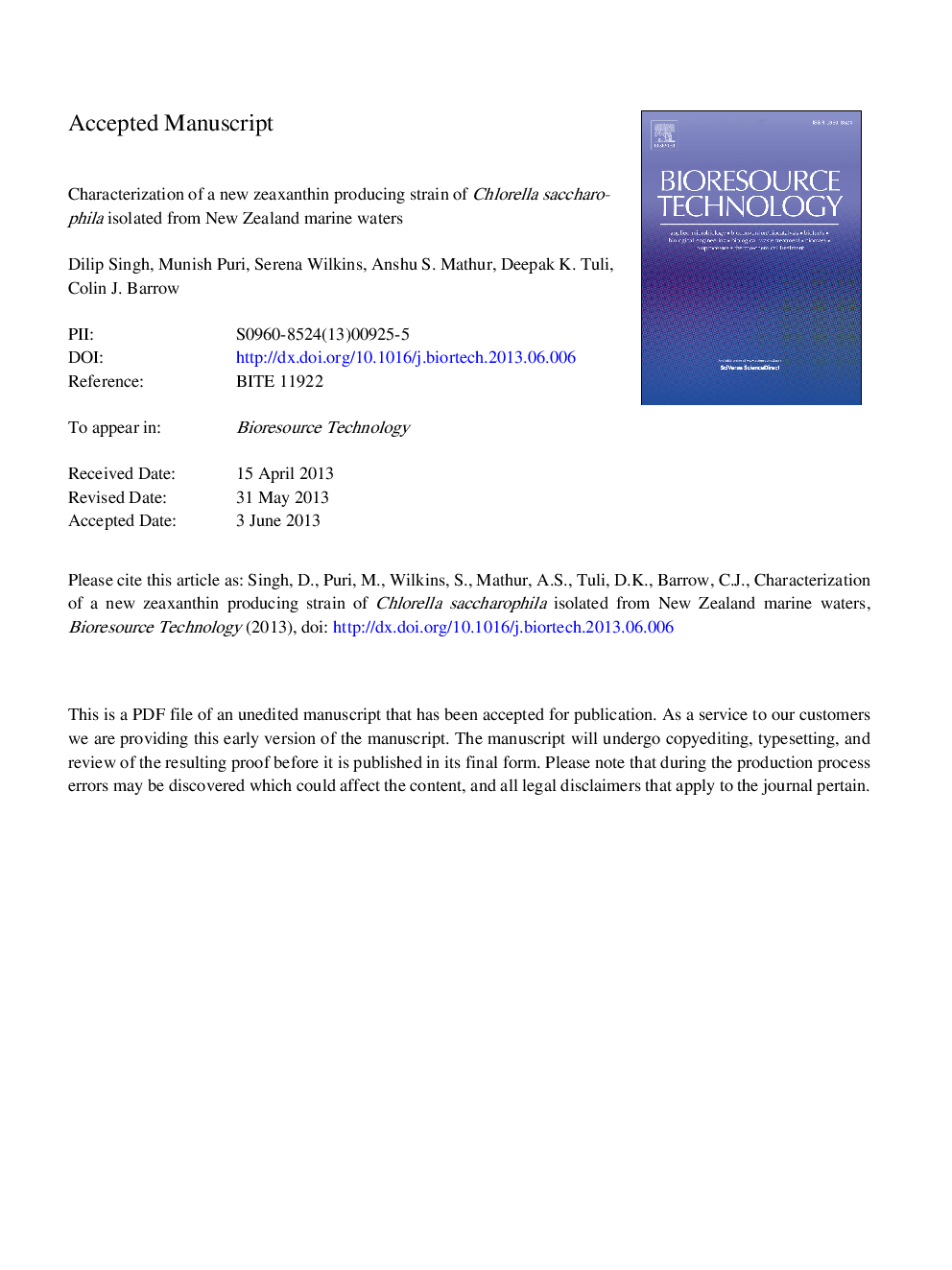| Article ID | Journal | Published Year | Pages | File Type |
|---|---|---|---|---|
| 7081578 | Bioresource Technology | 2013 | 34 Pages |
Abstract
A fast growing strain of Chlorella saccharophila was isolated from the marine water of New Zealand and grown in heterotrophic conditions using glucose or glycerol as a carbon source. Biomass production was found to be higher in culture fed with glucose (2.14 ± 0.08 g Lâ1) as compared to glycerol (0.378 ± 0.04 g Lâ1). Lipid accumulation was similar for both carbon sources, at approximately 22% of dry cell weight. However, carotenoid yield was higher with glycerol (0.406 ± 0.0125 mg gâ1) than with glucose (0.21 ± 0.034 mg gâ1). Further optimization of the growth of the isolate gave maximal carotenoid production of 16.39 ± 1.19 mg gâ1 total carotenoid, containing 11.32 ± 0.64 mg gâ1 zeaxanthin and 5.07 ± 0.55 mg gâ1 β-carotene. Comparison of various chemical and physical carotenoid extraction methods showed that ultrasonication was required for maximum extraction yields. The new strain has potential for biofuel, with carotenoid co-production.
Related Topics
Physical Sciences and Engineering
Chemical Engineering
Process Chemistry and Technology
Authors
Dilip Singh, Munish Puri, Serena Wilkens, Anshu S. Mathur, Deepak K. Tuli, Colin J. Barrow,
